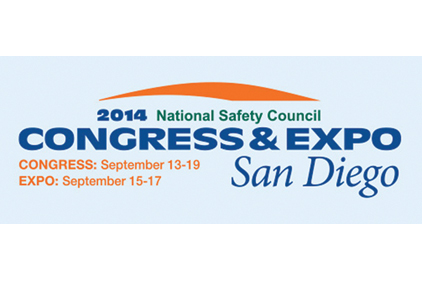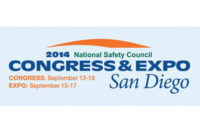Why do you say Commitment-Based Safety is the highest level of safety performance?
Research proves that when it comes to human behavior, we give far more discretionary behavior (that above minimum) when working on something we are personally committed to rather than doing work because some else has chosen it that way -- told us we must do it and then watches us to ensure we are doing it (enforcement).
In the sports field, we see this over and over and over. Teams that have highly competent players compete with each other. Typically in the championship games, the teams with more commitment win (Ray Lewis and the Baltimore defense holding the SF 49ers to no points in the Super Bowl two years ago when SF had 1st and goal from the four yard line with over a minute to go. Mr. Commitment (Passion) Ray Lewis and his teammates held the 49ers for four straight plays when all they needed was four yards. The power of Commitment.
Recently an employee thanked me for saving his life. I had a few months earlier in a safety forum shared the statistics and educated his team members on the facts of probabilities of dying from not wearing a seat belt in a crash. Weeks after my education to him, he was in a crash that totaled his car. He had been in compliance on and off for his whole life. Yet after the deeper education I gave, he literally chose a commitment to wear his seat belt 100 percent of the time. Two weeks later, it saved his life (in his own words). The power of commitment over compliance -- it's the only way to highest performance.
What are the essential components of Commitment-Based Safety?
1. Understand what a commitment is and the relationship to accountability (reinforcement). Most people think commitment is the same as intention. Way different words so we need to first educate those who want to perform at a higher level on the true elements of what a commitment is (Can't be committed if you don't know what that is - what it looks like behaviorally).
2. Identify key risks .
3. Choose --- Employees determine what risks they will focus on.
4. Act -- Daily increase in mindfulness and action to "produce" safety -- act on managing risks.
5. Review -- Have accountability to others, create a compelling scoring system for yourself.
Sound familiar? It's the application of Dr. Deming's Plan-Do-Check-Act cycle to safety by everyone, every day.
What are a few barriers that get in the way of commitments to safety?
Our nature. As put by executive Lance Fritz at Union Pacific Railroad, "Safety is both a learned behavior and it is a discipline that needs focus and action every day."
Our nature isn't to stay disciplined. Recent works in the field of biology prove our reluctance to be mindful and our desire to conserve energy (or not perform at our highest ability). Focus, elevated mindfulness and continued sustained discipline in anything requires a support or reinforcement structure. A key barrier is our own lack of desire to stay the course.
Another barrier is ignorance. I don't mean this to demean, but too few people understand the fundamental "why's" of what we do in safety. They don't understand the psychological principles and they don't understand human dynamics.
And hence, much of what we do behaviorally is systematized and mechanized to achieve process and numbers instead of spirit and relationship. We implement methods but miss the boat on essence of the process. BBS has had this issue for years. Its essence is personal development, commitment and service to others. Yet, in most companies it's about how many observations you do and forms getting turned in. We need to remember that the few core behavioral processes in safety are about "the spirit" or essence of the work, not the mechanics or measurement.
Does making commitments require empathy or emotional intelligence or is it a matter of training?
Great question.... First, it's not as much about training as it is education. Let’s remember the difference as Dr. Geller has so clearly. When we make it about training (what to do) we shortcut the ability to develop commitment. Commitment is sourced-in education, NOT training. Education is the answering of why we do what we do. Educating people is one of the three primary drivers of self-motivation (commitment).
Now, empathy and emotional intelligence come in on the second aspect of what drives human commitment. That is, ENGAGEMENT. Including or involving people.
Yet, let’s be clear that involvement and engagement is NOT a one-way conversation. If people are engaged they have both a voice and choice. Therefore, being empathetic, having emotional intelligence would suggest leaders have the ability to provide choice, and encourage the voice of those around them. And, voice and choice being the behavioral components of human engagement are essential for commitment. If you don't have a voice, if the conditions of what we asking people to do to manage safety don't include personal choices, we are again shortcutting commitment and over utilizing command and control that will eventually sub-optimize results.
The Ravens did not beat the 49ers because someone told them they had to. They had their voices and they made passionate choices four plays in a row to win.
Employees need to be included, have their voice, become engaged and make choices about what risks to manage and go after them in a way they significantly shift the probabilities of injuries downwards.
By the way, the final element of generating commitment by leaders is that of ensuring systemic reinforcement (positive accountability) is set up around employees for supporting their ongoing growth, development and excellence in managing ("producing") safety every day. When leaders have a greater degree of emotional intelligence they understand this social dynamic. This support, this accountability, is best peer-to-peer and kept simple. Yet, we must educate people to focus on the "cup half full" and appreciate what others have done for their risk management instead of an intense focus on "the cup half empty" or the areas we messed up. It is proven over and over that when effective support structures (positive reinforcement) is in place for people around the commitments they make, they excel in their performance.
Bob Veazie is president, People Powered Leadership, Commitment Based Safety™; 541-760-2951.


